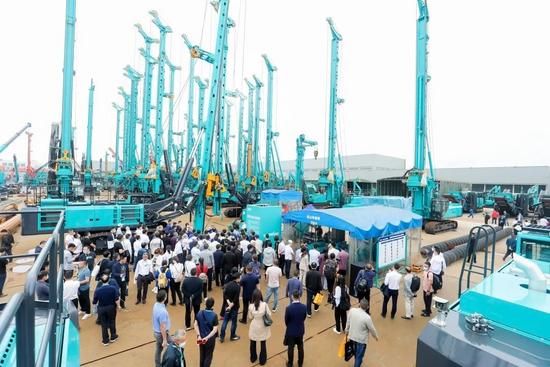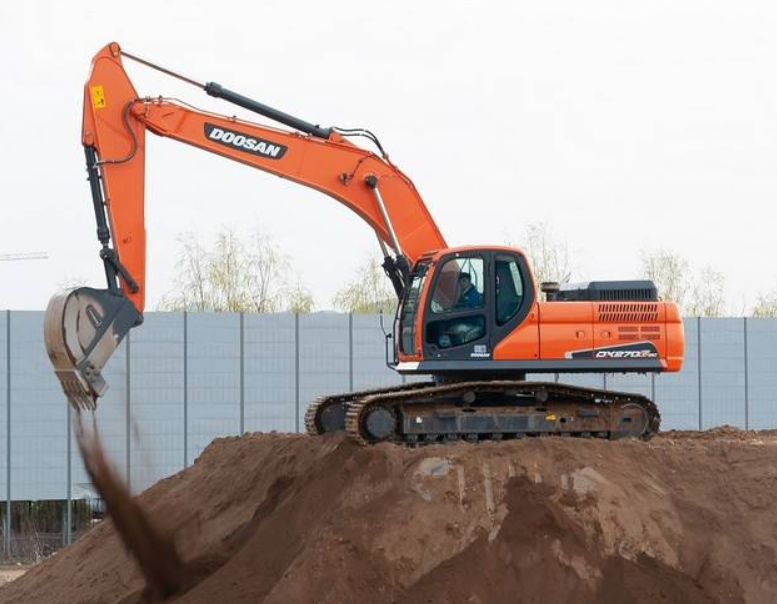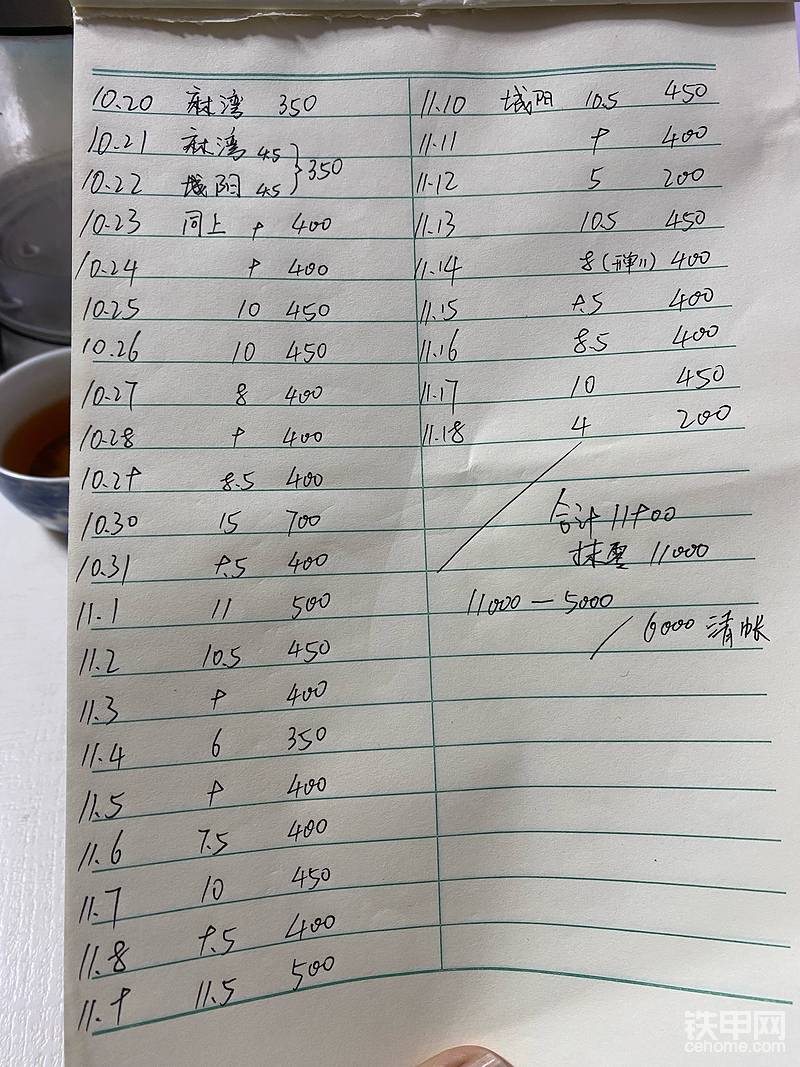Powerful Performance: User Review of Hyundai R215-7C Excavator
The opinions expressed in this article are solely those of individual members of our platform and do not represent the official stance of any specific construction machinery website.
The opinions expressed in this article are solely those of individual members of our platform and do not represent the official stance of any specific construction machinery website.
I have been using three Komatsu PC400-7 excavators for about two months. When purchased, the hour meters were around 2,000, and now they have all reached about 2,500 hours. The machine numbers are 5, 8, and 9. Below is a summary of each machine’s condition for reference by others interested in purchasing a 40-ton class excavator.
This Caterpillar 330D excavator arrived at the construction site on January 2, 2008. It has currently clocked 7,928 operating hours (I’ve mentioned this before, but some people didn’t believe it, so let me state it again — this is absolutely accurate. As an operator, I have no reason to exaggerate my work; I’m sharing this sincerely with fellow professionals).
The Kubota KX161 is a flagship 6-ton class excavator from Kubota Japan, widely used in China. This model is fully imported, powered by a 47-horsepower engine, weighs about 5.7 tons, and comes with a 0.22 m³ bucket as standard. It also features a breaker pipe, a dozer blade, and an anti-theft key (note: after 2008, the STD version no longer includes the breaker pipe).
The SANY SY65 and SY75C compact excavators often raise a few common questions among operators and service personnel in China. Most of these are due to differences between compact and mid-size excavators. Below is an explanation of frequent concerns and recommended solutions.
I’ve owned this machine for about three months now. Since I also operate a Yuchai 35-6, I haven’t spent as much time on the DH70 as I could have, but I’ve used it enough to sum up its strengths and weaknesses based on around 500 working hours.
Having worked in the excavator industry for several years, I’ve formed my own impressions of different brands. Once, while chatting with industry peers, we discussed which excavators offer the worst value for money in China. Based on our experience, we summed up a few brands that we think have the lowest cost-performance ratio. Of course, this is just a personal perspective — others may have different opinions.
Hey everyone — after years of hustling on construction sites across China, who wouldn’t want a truly versatile machine? Smooth municipal trenching and roadwork? Easy. Lightning-fast loading at quarries? No problem. Digging channels for farmland irrigation and water diversion? Effortless. SANY’s brand-new SY75W wheeled excavator is here to show what a real “multi-tasking pro” looks like. Today, let’s break down what makes this jobsite veteran stand out!
A skilled operator should always be aware of the soil or rock type and its strength during drilling. Choosing the right drill rod, drilling tool, and drilling method is crucial for efficient operation, minimal wear, lower load, and maximum drilling speed.

Over the years, Doosan has released quite a few new models — from the toy-sized DX20Z to the giant DX1000 you have to look up at. But when it comes to real classics, their 20–30 ton class excavators are still the go-to choice. Today, I’ll share my experience with the DX270LC-9C.

Here’s a quick comparison of 10 popular 6-ton class mini excavators:
Doosan DX60-9C, Kobelco SK60-8, Hyundai HX60, Caterpillar Next Gen 306, Komatsu PC60-8, Hitachi ZX60-5A, SANY SY60C, XCMG XE60DA, Liugong CLG906D, and Volvo EC60D.
Selecting the right hydraulic breaker (also known as a rock hammer) is a critical technical decision that directly impacts work efficiency, equipment lifespan, and overall cost-effectiveness. The key is to ensure that the breaker matches your excavator and actual working conditions for optimal performance.
Life doesn’t give us endless decades — time is short, and wherever you invest your energy, whether or not it bears fruit, it always becomes part of your unique journey. Who can step into the same river twice? So, allow me to share my personal reflections over these years — a way to self-examine, to savor lessons learned, and to keep growing through trial and error.
In construction, machinery, and for us front-line workers, there’s little we can do to change the big picture. But within our own small circles, we can keep learning as we work, watching as we learn, and find calm amid an unpredictable current. If we can breathe steadily and find our own rhythm, maybe we can swim further, with a healthier body and mind.
When I was young, construction machinery was a rare sight, and most projects were small and scarce. Even basic tasks like widening and deepening irrigation ditches were done by sheer manual labor — what we used to call “ba gong” (digging by hand).
Go back even further: the Grand Canal running past my hometown was literally dug out by human hands. Imagine, with today’s know-how, building the Grand Canal would be so easy for modern Chinese people — almost effortless. From the economic boom of the 1980s to the few decades up until the pandemic, progress has been nothing short of astonishing. We all know the old phrase: “Which brand makes the best excavator?” — everyone’s heard it by now.
Just look at the rise of construction: state-owned giants, international deals, massive real estate booms — all blazing ahead like a rocket. But during the pandemic — triggered by an invisible microorganism — that rocket seemed to stall mid-flight. It didn’t exactly fall off a cliff, but if you look at the sales numbers of major machinery brands, you’ll see the trend clearly.
Where I work — here in a third- or fourth-tier city — things have changed dramatically in just a few years. Operator day rates skyrocketed to 400 yuan for an 8-hour shift, paid in cash. Even with fuel savings and fewer working hours, demand still outstripped supply. Sometimes you couldn’t even find a good operator, and mini excavators (which used to be cheap) were suddenly renting for 450 yuan per shift. This is the reality where I live and work.
These days, in my city, the going rate for a mini excavator operator is around 300–350 yuan for a day shift, while a full-day operating fee can easily reach 900 yuan — and you still have to take the job. One year, our local excavator association even organized a meeting to set the hourly rate at about 120–130 yuan, but in hindsight, that seems laughable. It’s like trying to set a house price at 10,000 yuan per square meter, but in practice you can only sell it for 7,000 or 8,000 — prices can crash overnight. Deals happen — or don’t — regardless of personal expectations. For ordinary people like us, all we can do is accept reality and keep moving forward.
Externally, we sometimes face restrictions. Internally, heated competition and lack of trust, along with weaker spending power, make things harder. I hope this downward spiral won’t continue. May every family connected to construction machinery find stability and peace in this “after the whale falls, all things thrive” moment.
I’m not being pessimistic or alarmist. Thankfully, a few buddies and I still run our mini excavators, taking shifts and earning around 10,000 yuan a month — not bad at all. Only January, December, and the rainy season are a bit slow; the rest of the year is manageable.
The most important thing is to do things the right way, to reflect on our actions from different roles and perspectives, and to take responsibility for problems when they arise. It’s not about whether the boss is good or whether you get approval. If you stay true to your conscience and keep a clear mind, whether you’re a boss, a shift operator, or any other worker on site, you’ll find work, earn trust, gain respect, and seize opportunities.
Let’s encourage each other and keep going!

As the usage of excavators continues to rise across various construction and engineering projects, ensuring the optimal performance and longevity of their components becomes paramount. Among these components, bucket teeth play a crucial role in excavation efficiency. Proper selection, operation, and maintenance of bucket teeth can significantly enhance productivity and reduce operational costs.
With the continuous upgrading and improvement of mechanical equipment, more and more industries are turning to these advanced machines to assist in operations. Among them, excavators are one of the most practical and widely used. The bucket teeth, being a critical working part of an excavator, play a vital role. If the bucket teeth malfunction, a significant portion of the machine's functionality becomes unusable. Therefore, maintaining excavator bucket teeth is of great importance.